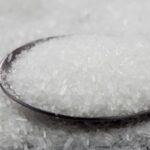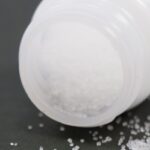
“Discussions about the guideline of additive labeling for use of ‘non-use'” have been held since this March to discuss the non-use labeling of food additives. And the other day, in “Confirmation of whether or not it falls under Article 9 of Food Labeling Standards”, 11 items by types were created for “non-use labeling of food additives that may cause misunderstandings”.
“Guidelines of additive labeling for use of ‘non-use'” is scheduled to be created next March. Even at present, if a product is simply labeled as “additives not added”, or if an additive that falls under the category of processing aid or carry-over is used and such additive is labeled as “non-use” on the corresponding product, it may fall under the prohibited items according to Article 9 (Prohibited Labeling Items) of Food Labeling Standards.
Prohibited labeling items for each individual food
It should be noted that in Article 9 (Prohibited labeling items) there may be a definition for each individual food, as well as cross-sectional rules such as “non-use”.
As for foods listed in the upper column of Appended Table 22, prohibited labeling items listed in the lower column of the same table must not be indicated on containers and packaging.
Appended Table 22 (partial excerpt)
| Food | Prohibited labeling items | ||||||||||||
|---|---|---|---|---|---|---|---|---|---|---|---|---|---|
| Canned agricultural products and bottled agricultural products | 1 “天然” (EN: natural) or “自然” (EN: natural) 2 “純正”(EN: genuine) and other terms that indicate pureness |
||||||||||||
| Macaronis | Terms that specifically indicate the names of a part of ingredients in contrast to the names of other ingredients. However, this is not applied to a case where the solids of ingredients per 100 grams of the product are 4 grams or more for eggs and 3 grams or more for vegetables. | ||||||||||||
| Chilled dumplings | Terms that specifically make a claim for a particular ingredient. However, this does not apply to the following cases.
When indicating the terms “fish” or “vegetables” in accordance with the paragraph on chilled dumplings in Appended Table 19, -In the case of using a product name bearing the name of an ingredient of which percentage by weight in the filling is equal to or greater than the percentage specified in the following table -In the case of indicating that the product contains specific ingredients and the percentage of the weight of said ingredients together with the product name (excerpt)
|
As some of the cases above shows that in Appended Table 22, there are “terms” that are prohibited from being displayed, and “ratio” and “content rate”, etc. specified when indicating.
The terms “天然”(EN: natural) and “自然”(EN: natural), which are prohibited in the labeling for “canned and bottled agricultural products, as well as ” 新鮮”(EN: fresh) and “フレッシュ”(EN: fresh) in other foods, can be found in some containers and packaging. In those cases, they are not prohibited terms. For example, in “macaroni”, regarding the product “spaghetti with spinach” kneaded with “spinach”, “spinach” corresponds to vegetables, so if the solid content of “spinach” is 3 grams or more per 100 g of the product, it does not fall under the prohibited items.
As for the percentage rule for “chilled dumplings,” for example, if there is a chilled dumpling product named “dumpling with crab,” and the percentage of crab weight is not specifically stated along with the product name, then the percentage of crab weight is supposed to be 10% or more. Regarding “crab”, there are regulations for frozen dumplings, frozen Shumai, and frozen croquettes as well, and you will need to check the content of “crab”.
About the foods listed in Appended Table 5
Apart from prohibited labeling items in Article 9, Article 3 has provisions that restrict the use of legal names.
For foods other than those listed in the upper column of Appended Table 5, the names listed in the lower column of the same table shall not be indicated.
In the upper column of Appended Table 5, the legal name “tomato juice” is listed for “tomato Juice” in processed Tomato Products”. The definition of the term “tomato juice” is listed in Appended Table 3. Only those products that meet this definition can be labeled as “tomato juice,” while those that do not meet this definition cannot be labeled as “tomato juice.
Prohibited labeling items under Fair Competition Code
Not only Food Labeling Standards but also Fair Competition Code stipulate “Prohibition of false and misleading labeling”. Similar to Food Labeling Standards, in addition to the provisions on “terms” and “ratio,” there are also provisions that stipulate improper labeling by legal name, as well as regulations that include not only labeling but also prohibitions on excessive containers and packaging.
As food labeling requires items to be indicated other than Form 1, depending on the legal name of the food, the prohibited items for labeling vary depending on the legal name of the food. We hope this will provide an opportunity for you to reconfirm the products you are manufacturing and handling.
References
- Food Labeling Standards
- Fair Competition Code
- About the guideline of additive labeling for use of “non-use”
Share/Like/Follow:
Newsletter Signup
We issue monthly e-newsletters, which provide you with the latest updates on food labeling/regulations in Japan.
If you want to make sure to not miss any issue, please click below.
Related Service
Research Services on Ingredients & Food Labeling -For the Japanese Market-
We verify the conformity of ingredients and additives with the standards for use in Japan based on specifications such as formulation lists. We also verify the conformity of the proposed labeling of ingredient names, nutrients, etc. with the labeling standards based on specifications such as formulation lists.
Label bank Co., Ltd. Regulatory Review and Development
Based on her knowledge and experience in food quality management, she is engaged in research work on ingredients and labeling drafts for food products distributed mainly in Japan, as well as consulting and lecturing at seminars on food labeling based on her practical experience in the food industry.



